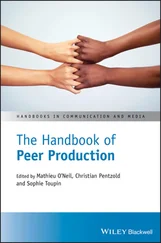26 Darwin, C. J., & Sutherland, N. S. (1984). Grouping frequency components of vowels: When is harmonic not a harmonic? Quarterly Journal of Experimental Psychology, 36A, 193–208.
27 Diehl, R. L., Molis, M. R., & Castleman, W. A. (2001). Adaptive design of sound systems. In E. Hume & K. Johnson (Eds), The role of speech perception in phonology (pp. 123–139). San Diego: Academic Press.
28 Dorman, M. F., Cutting, J. E., & Raphael, L. J. (1975). Perception of temporal order in vowel sequences with and without formant transitions. Journal of Experimental Psychology: Human Perception and Performance, 104, 121–129.
29 Eimas, P., Miller, J. (1992). Organization in the perception of speech by young infants. Psychological Science, 3, 340–345.
30 Engineer, C. T., Perez, C. A., Chen, Y. H., et al. (2008). Cortical activity patterns predict speech discrimination ability. Nature Neuroscience, 11, 603–608.
31 Fant, C. G. M. (1960). The acoustic theory of speech production. The Hague: Mouton.
32 Fletcher, H. (1929). Speech and hearing. New York: Van Nostrand.
33 Fodor, J. A. (1983). The modularity of mind. Cambridge, MA: MIT Press.
34 Gaver, W. W. (1993). What in the world do we hear? An ecological approach to auditory event perception. Ecological Psychology, 5, 285–313.
35 Goh, W. D., Pisoni, D. B., Kirk, K. I., & Remez, R. E. (2001). Audio‐visual perception of sinewave speech in an adult cochlear implant user: A case study. Ear and Hearing, 22, 412–419.
36 Hochberg, J. (1974). Organization and the gestalt tradition. In E. C. Carterette and M. P. Friedman (Eds), Handbook of perception: Vol. 1. Historical and philosophical roots of perception(pp. 179–210). New York: Academic Press.
37 Holt, L. L. (2005). Temporally nonadjacent nonlinguistic sounds affect speech categorization. Psychological Science, 16, 305–312.
38 Holt, L. L., & Lotto, A. J. (2006). Cue weighting in auditory categorization: Implications for first and second language acquisition. Journal of the Acoustical Society of America, 119, 3059–3071.
39 Houston, D. M., & Bergeson, T. R. (2014). Hearing versus listening: Attention to speech and its role in language acquisition in deaf infants with cochlear implants, Lingua, 139, 10–25.
40 Howell, P., & Darwin, C. J. (1977). Some properties of auditory memory for rapid formant transitions. Memory & Cognition, 5, 700–708.
41 Iverson, P. (1995). Auditory stream segregation by musical timbre: Effects of static and dynamic acoustic attributes. Journal of Experimental Psychology: Human Perception and Performance, 21, 751–763.
42 Jones, M. R., & Boltz, M. (1989). Dynamic attending and responses to time. Psychological Review, 96, 459–491.
43 Jusczyk, P. W. (1997). The discovery of spoken language. Cambridge, MA: MIT Press.
44 Klatt, D. H. (1989). Review of selected models of speech perception. In W. Marslen‐Wilson (Ed.), Lexical representation and process (pp. 169–226). Cambridge, MA: MIT Press.
45 Lackner, J. R., & Goldstein, L. M. (1974). Primary auditory stream segregation of repeated consonant–vowel sequences. Journal of the Acoustical Society of America, 56, 1651–1652.
46 Liberman, A. M., & Cooper, F. S. (1972). In search of the acoustic cues. In A. Valdman (Ed.), Papers in linguistics and phonetics to the memory of Pierre Delattre (pp. 329–338). The Hague: Mouton.
47 Liberman, A. M., Ingemann, F., Lisker, L., et al. (1959). Minimal rules for synthesizing speech. Journal of the Acoustical Society of America, 31, 1490–1499.
48 Liberman, A. M., Isenberg, D., & Rakerd, B. (1981). Duplex perception of cues stop consonants: Evidence for a phonetic mode. Perception & Psychophysics, 30, 133–143.
49 Liberman, A. M., & Mattingly, I. G. (1985). The motor theory of speech perception revised. Cognition, 21, 1–36.
50 Licklider, J. C. R. (1946). Effects of amplitude distortion upon the intelligibility of speech. Journal of the Acoustical Society of America, 18, 429–434.
51 Liebenthal, E., Binder, J. R., Piorkowski, R. L., & Remez, R. E. (2003). Short‐term reorganization of auditory analysis induced by phonetic experience. Journal of Cognitive Neuroscience, 15, 549–558.
52 Lindblom, B. (1996). Role of articulation in speech perception: Clues from production. Journal of the Acoustical Society of America, 99, 1683–1692.
53 Lisker, L. (1978). Rapid vs. rabid: A catalog of acoustic features that may cue the distinction. Haskins Laboratories Status Report on Speech Perception, SR‐54, 127–132.
54 Lotto, A. J., & Kluender, K. R. (1998). General contrast effects in speech perception: Effect of preceding liquid on stop consonant identification. Perception & Psychophysics, 60, 602–619.
55 Lotto, A. J., Kluender, K. R., & Holt, L. L. (1997) Perceptual compensation for coarticulation by Japanese quail. Journal of the Acoustical Society of America, 102, 1135–1140.
56 Magnotti, J. F., & Beauchamp, M. S. (2017). A causal inference model explains perception of the McGurk effect and other incongruent audiovisual speech. PLOS Computational Biology, 13, e1005229.
57 Massaro, D. W. (1994). Psychological aspects of speech perception: Implications for research and theory. In M. A. Gernsbacher (Ed.), Handbook of psycholinguistics (pp. 219–263). San Diego: Academic Press.
58 Mattingly, I. G., Liberman, A. M., Syrdal, A. K., & Halwes, T. G. (1971). Discrimination in speech and nonspeech modes. Cognitive Psychology, 2, 131–157.
59 McDermott, J. H. (2009). The cocktail party problem. Current Biology, 19, R1024–1027.
60 Miller, G. A. (1946). Intelligibility of speech: effects of distortion. In Transmission and reception of sounds under combat conditions (pp. 86–108). Washington, DC: National Defense Research Committee.
61 Miller, G. A., & Licklider, J. C. R. (1950). The intelligibility of interrupted speech. Journal of the Acoustical Society of America, 22, 167–173.
62 Mountcastle, V. B. (1998). Perceptual neuroscience. Cambridge, MA: Harvard University Press.
63 Munhall, K. G., Gribble, P., Sacco, L., & Ward, M. (1996). Temporal constraints on the McGurk effect. Perception & Psychophysics, 58, 351–362.
64 Neff, D. L., Jesteadt, W., & Brown, E. L. (1982). The relation between gap discrimination and auditory stream segregation. Perception & Psychophysics, 31, 493–501.
65 Nygaard, L. C. (1993). Phonetic coherence in duplex perception: Effects of acoustic differences and lexical status. Journal of Experimental Psychology, 19, 268–286.
66 Parsons, T. W. (1976). Separation of speech from interfering speech by means of harmonic selection. Journal of the Acoustical Society of America, 60, 911–918.
67 Peña, M., Bonatti, L. L., Nespor, M., & Mehler, J. (2002). Signal‐driven computations in speech processing. Science, 298, 604–607.
68 Pisoni, D. B., Tash, J. (1974). Reaction times to comparisons within and across phonetic categories. Perception & Psychophysics, 15, 285–290.
69 Rand, T. C. (1974). Dichotic release from masking for speech. Journal of the Acoustical Society of America, 55, 678–680.
70 Remez, R. E. (2001). The interplay of phonology and perception considered from the perspective of perceptual organization. In E. Hume & K. Johnson (Eds), The role of speech perception in phonology (pp. 27–52). San Diego: Academic Press.
71 Remez, R. E. (2008). Sine‐wave speech. In E. M. Izhikovitch (Ed.), Encyclopedia of computational neuroscience. Scholarpedia, 3, 2394.
72 Remez, R. E., Dubowski, K. R., Davids, M. L., et al. (2011). Estimating speech spectra by algorithm and by hand for synthesis from natural models. Journal of the Acoustical Society of America, 130, 2173–2178.
73 Remez, R. E., Dubowski, K. R., Ferro, D. F., & Thomas, E. F. (forthcoming) Primitive audiovisual integration in the perception of speech.
Читать дальше
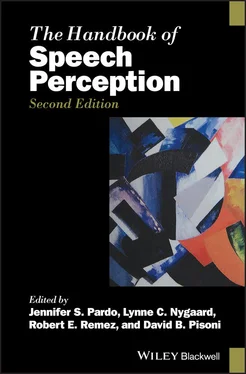

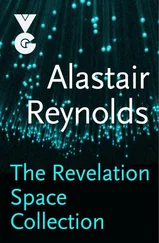

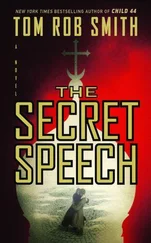

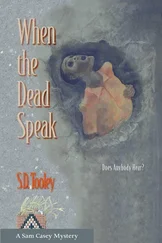
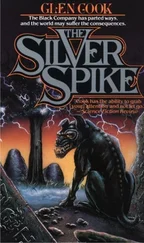
![О Генри - Справочник Гименея [The Handbook of Hymen]](/books/407356/o-genri-spravochnik-gimeneya-the-handbook-of-hymen-thumb.webp)



